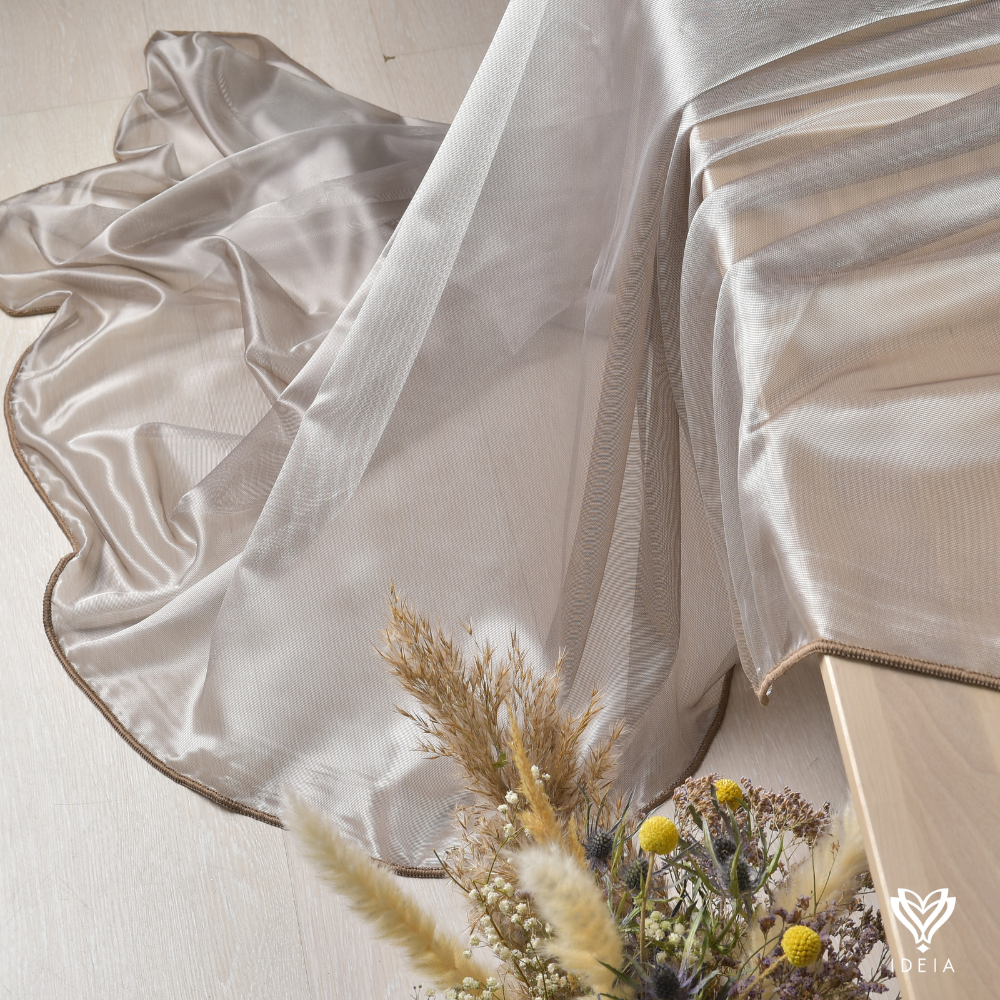Quite often, our clients are interested in how the bottom of the tulle is processed. So today we are talking about these features so that you can orientate yourself if it is not stated in the photo or in the description, or is not clearly visible.
Today's light industry offers two types of bottom finishing of tulle fabrics. Pay attention, it is tulle ones, this does not apply to curtains in any way. It can be festoons and weighting.
.png) Festoons are compacted protrusions along the edge of the tulle fabric. They can be deep or less pronounced, rounded or more like a triangle. It depends on the embroidery that is presented on the tulle canvas and the design.
Festoons are compacted protrusions along the edge of the tulle fabric. They can be deep or less pronounced, rounded or more like a triangle. It depends on the embroidery that is presented on the tulle canvas and the design.
The presence of a festoon, due to its curved shape and sealing of the edge, prevents twisting of thin fabric. It does not climb up. Well, it also visually completes the bottom of the canvas. Festoons are used mainly on tulle with embroidery. After all, the sealing of the bottom occurs thanks to the embroidery of the edge of the tulle fabric.
 Weighting is the sealing of the edge of the tulle by sweeping with a special cord.
Weighting is the sealing of the edge of the tulle by sweeping with a special cord.
In this case, the edges of the canvas are even. This finish serves the same purpose as a festoon, only it has a different appearance. The edge of the delicate tulle fabric does not bend, does not jump up, does not twist.
The weighting agent is used on plain tulles of different textures. On tulle with a printed pattern, on mats and on gauze. On tulle fabric, where there is no embroidery.
As you can see, similar types of processing create a radically different visual effect. which diversifies the possibilities of their application.
Today, both the festoon and the weighting device are made in factory conditions. The fabric for sale in stores comes already with the finished bottom, and you do not have to do anything with the lower edge of the canvas. The height is measured from the bottom to the required level, depending on the measurements and the height of the ceiling.
Sometimes, when the embroidery pattern allows and it is the designer's intention, tulle with festoons is turned over. And then the side edge is wavy, as if with a fringe. As a rule, this method is used when the height of the curtain product is low and in combination with pick-ups to emphasize just this visual effect. And in this case, there is a significant saving on the length of the fabric.
So now you can determine at a glance how the hem is finished on the tulle you have chosen. And we advise you to contact us for advice on the design of your windows. Let's do everything in the best way.
According to the principle of combining curtain fabrics, read HERE.
